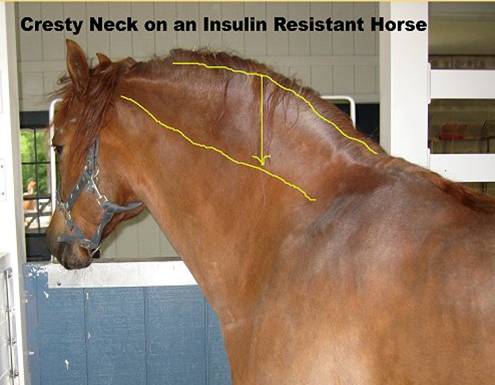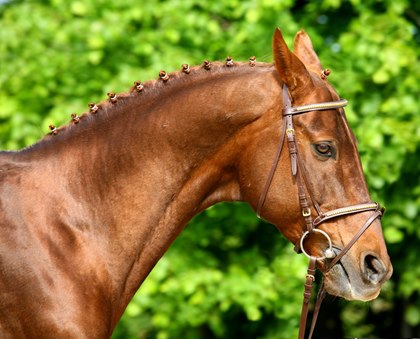
This is the second part of the story about our recent hoof care clinic.
These notes are more things that struck me as I was listening in at the back of the room. Mostly, making sure that I didn’t spout off silly comments as they came into my brain! I think I succeeded at this. Many of these thoughts weave together what Randy and Matt were teaching us with all the stuff I do when practicing Veterinary Medicine.
- Translation of the coffin joint can be restricted in multiple ways.
- Long toes continued: explain how tendons work
- I really want to explore if thermographic scans of body sore horses change when their feet are balanced better!
- Everything is connected to proper movement & function: Feet (of course-that was the focus of this clinic!), posture & ease of movement, teeth and behavior, just to name a few of the things we covered on Saturday.
- When the shoes come off, the truth comes out.
This first point was an AHA moment for me. We were having a discussion about the first joint between PIII (coffin bone) and PII. This joint should be at least flush with the coronary band if not just above it when imaged with Radiographs (X-ray). In many of our shod horses it isn’t even close! When the sole is thin and the soft tissues inside the hoof don’t function correctly the bony column of the leg descends into the hoof capsule. This causes lots of bad stuff. The laminae become inflamed and stretched trying to hold the coffin bone in place. The palmar digital angle is often level or negative.
AND then I saw it in my mind: The translation of the coffin joint would be disrupted! The coffin joint moves in many different planes. Translation happens when the foot is on the ground and the the rest of the leg continues moving by sliding at coffin joint. It is a normal range of motion (ROM) for this joint. I palpate these when I’m adjusting the front leg. And I adjust this joint when I find a restriction. If this joint is completely encased in the hoof capsule, translation will be restricted by the hoof wall, not just the structures of the joint. I have had a couple of horses that have been hard to palpate and adjust in this joint. Now, this makes perfect sense to me.
If translation isn’t available as a ROM for this joint this sets up the joints up-river for more trauma as they are jammed back and forth. Remember, translation is the cool thing where the coffin joint glides front to back. None of the joints farther up the leg have this cool feature. This could lead to more break down injuries, pain in the front leg and dysfunction in how the energy is conducted up the front leg. This energy should travel up the leg in waves-you can see this on a slow motion video of a horse in motion. When the energy reaches the top part of the leg it should move towards the rear of the horse. It shouldn’t get stuck in the neck, creating bracing and tension here.
Do all horses need their feet radiographed to assess the bony column? Probably. It sure makes it easy to see these important structures and where they are located in the hoof capsule. Will ALL my clients agree to this…probably not. It does give us a fabulous 3-D view of what is happening in the foot and a great starting point to work from.
Now, when I’m adjusting, I will pay particular close attention to translation in the coffin joint and how the feet appear.
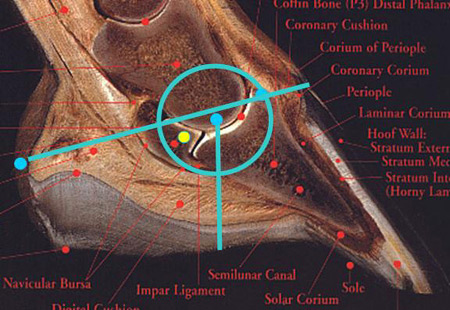
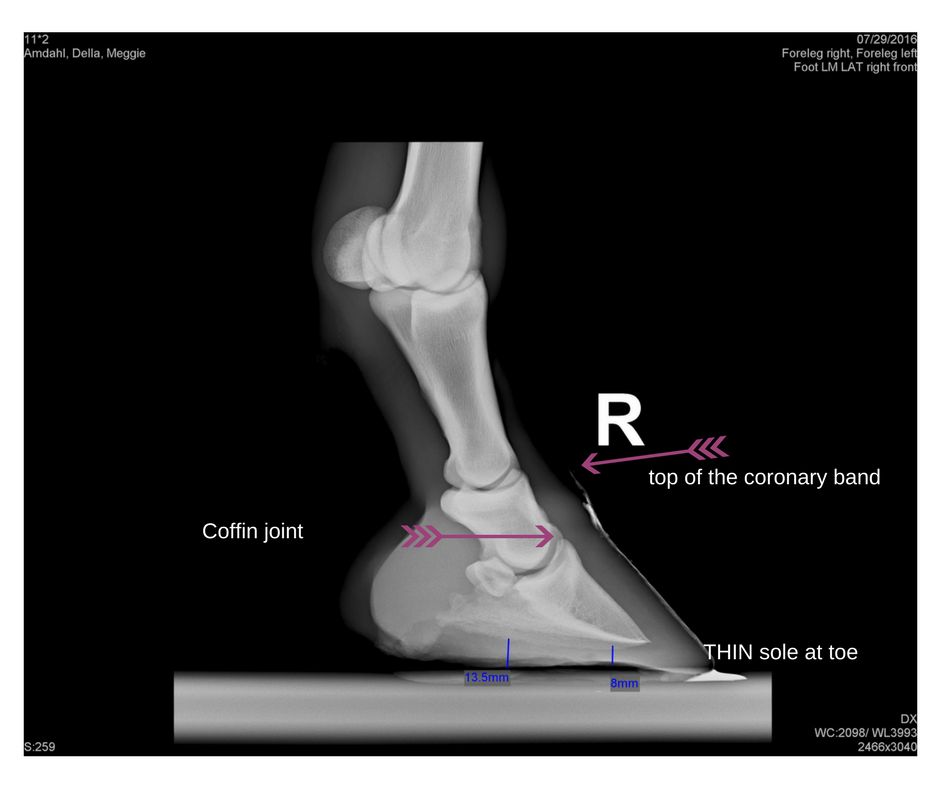
More thoughts about long toes. Really, if I could just convince you to work to keep your horse’s toes shorter, much of these “problems” will just disappear. Randy was explaining how the soft tissue of the front leg and the bony structures are all connected. He had an articulated model that he was showing movement with. Again, I was listening with a softer focus to what Randy was saying. He was talking about toe first vs. heel first and how to improve the foot landing. My brain went to how the tendons of the leg work. A BIG LIGHT BULB FLASHED IN MY HEAD: Horses with toe first landings have to work so much harder to move forward. Let me explain. The tendons are elastic structures and their job is to absorb energy during the stride or stance phase as the foot is in contact with the ground. Then this energy is released as the foot leaves the ground in the swing or suspension phase. This is biomechanics/physics 101: a body in motion tends to stay in motion and one at rest tends to stay at rest. This model also works on the premise that the foot lands flat-ish so the tendons on the backside of the leg can gather this energy from the contact with the ground. Well, if the foot has to hit the ground 2-3 times starting at the toe, this will dampen the effect of the energy that can be stored. Can you see this in your own mind? The toe strikes the ground the hardest, then the middle of the foot, then the heel touches down. By the time the heel touches down, most of the opportunity to harvest this energy is gone. This means that the horse has to work extra hard to lift this foot off the ground again for the next swing phase. This makes all those conversations about break-over moot, right?!

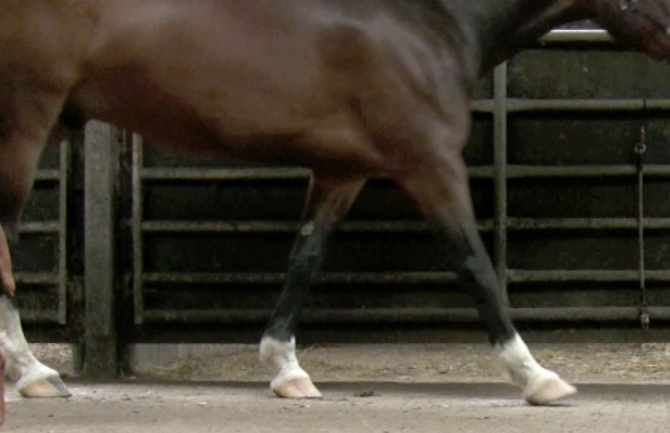
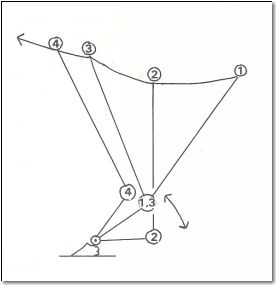
The next thing is just a bug in my own ear. I want to explore if a body sore horse’s thermography scan changes when his feet are balanced better. My gut says yes, this absolutely will happen. Their heat maps change almost instantly with almost any type of hands on manipulations. I have many before/after images from when I treat horses with chiro, acupuncture or any other technique, even cold laser therapy! This seems like it would be easy to check too. But getting standardized thermography images is hard to do. The horse has to be in an environment that is takes all the variables out. So, out of the sunshine and wind for a set period of time and it is best to have a known ambient temperature. Most of my work is done out in the field. Correcting for these variables would be needed to know more. Oh, and I’m not a statistician! I just think of these things.

The last two points are not really measurable. They are more editorial and more of an opinion. There was a comment under the first blog that mentioned that these horses will need body work to really return to function. This is absolutely true. This is also a very fine balance. Many times I can do all the right adjustments and address the patterns necessary with acupuncture and the horse gets better…but relapses quickly or worse, something else pops out at us. I usually see this as an opportunity to explore why. The most common reasons horses don’t just make the leap to wellness include:
- Foot balance–of course! That’s the focus in this blog!
- Undiagnosed or untreated diseases: Ulcers or digestive problems, Metabolic disease, founder, PPID, EIPH (bleeders), heaves are all problems that I find that complicate performance directly and indirectly by keeping the horse’s body sore.
- Many horses NEED to rest. They need to rest both physically and mentally. This is how they learn and how they can return to proper posture.
- Owners try to rush the restorative exercises–& I think we are all guilty of this one!
- Tack and rider problems: This one can be super subtle or super obvious.
This is a particular point that I’ve learned and am reminded of daily: Horses in PAIN might try very hard for you for awhile…then they will lose it. Bad behavior in horses, especially, broke horses IS PAIN UNTIL PROVEN OTHERWISE! Sometimes, finding the source(s) of the pain can be a challenge. And lastly, sometimes, when you find the source of the pain, it might not be “fixable”. I have one of those in my pasture, right now. I’ll tell you his story soon.
I would love to hear any of your thoughts and stories relating to the topics in this blog and the previous one about our recent hoof care clinic.
